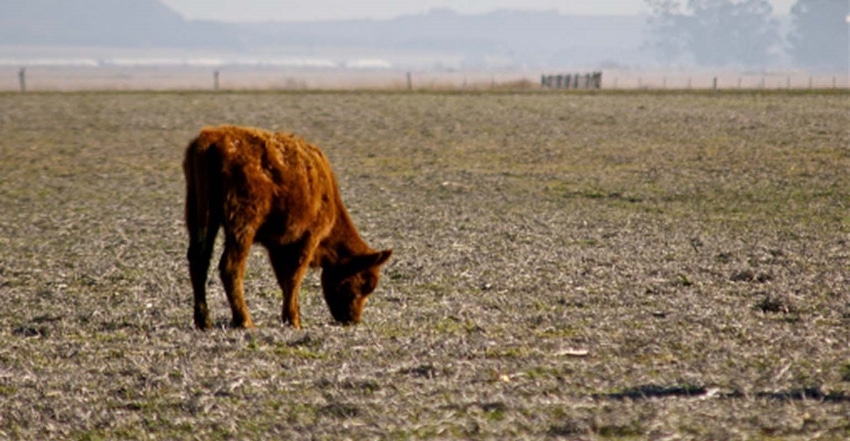
When we acquired the ability to hold animals on land that could no longer meet their needs for feed and water, we acquired the ability to destroy our grasslands.
Prior to human intervention, when growing conditions deteriorated on an area, the grazing animals either left or died; they could not remain in significant numbers to pick at the struggling vegetation and permanently degrade the weakened local environment.
Grazing lands are composed of four components, all essential:
1. Animals
2. Vegetation
3. Soil
4. Water
When drought or other disasters strike, permanent (life-ending) damage occurs first to the grazing animals. They can exist for only short periods without feed and water. Vegetation has some ability to go dormant (or retreat into seeds) and can thus survive poor conditions for longer periods of time. The soil will be damaged (mainly loss of soil life) but if it is not physically washed or blown away, it can survive periods of poor conditions.
How quickly grasslands recover following catastrophic local damage depends upon how long grazing animals remain after the land can no longer support them. Prior to windmills, hay and sacked feed, this was a very short period of time -- no longer than it took for water holes to go dry or for the vegetation in walking distance of permanent water to be consumed.
As the soil dried, the first plants to suffer and quit producing were the shallow-rooted, low-seral (low-successional) plants, mostly annuals and short-lived perennials. The mid-seral plants shut down next, and if the drought continued only the deep-rooted, high-seral plants would be capable of producing any green leaf.
The truth is, tecurring drought is a prime factor in creating grasslands dominated by high-quality, long-lived forage plants. If the grazing animals are gone, the little bit of green leaf remaining could be sufficient to produce enough energy to keep the spark of life alive in well-adapted plants. If animals are not removed, all green material will be consumed, energy flow will cease, and the soil-plant-animal complex will collapse. This has happened to millions of acres all over the world. Desertification has been caused by fundamentally well-intentioned humans.
The health of the local water cycle is always of prime importance but becomes critical during drought. This health status – determined by the percentage of the available precipitation captured by the local environment – is highly dependent on the conditions of the local soil and vegetation. Especially critical is the condition of the soil surface. The removal of the animals will allow ground cover, both alive and dead, to remain in place rather than being consumed. A covered soil surface greatly improves the health of the local water cycle. The more ground cover, the greater the percentage of the rain that does fall will soak in and be useful to the local ecosystem.
If grazing animals are still present during serious drought, each bit of green leaf will be consumed as soon as it appears. This repeated removal of leaf before it has time to produce at least as much energy as was required for it to grow is the correct definition of the term "overgrazing." It occurs on a plant-by-plant basis and if it continues long enough, energy flow through the system halts, and plants and soil life will die. If the animals are removed before long lived forage plants succumb to over grazing and before ground cover is destroyed, recovery can be very rapid once the rains return.
With the possible exception of tillage, the single most wealth destroying practice, financially and ecologically, is to keep animals on land that can no longer support them. Overstocking is damaging but if practiced without supplementation, as occurs in nature, will be self limiting; animal numbers will die back to more realistic levels fairly rapidly. If substitution feed is provided, as is the norm when humans manage, the damage can continue for very long periods of time with disastrous results.
Areas grazed continuously will always suffer damage with high-quality forage plants being singled out for heaviest use due to their trait of remaining longer in a vegetative (nutritious) state. They also tend to have deep root systems which allow them to make some growth even in severe drought.
Providing supplemental feed increases damage to the land since it prolongs the time period over which damage occurs. Damage to the soil-plant complex is due more to the frequency of defoliation than it is to the degree of defoliation. Continuous grazing, in which animals are always present, causes frequent defoliation. In these examples, we can see different circumstances can cause the same bad results.
About the Author(s)
You May Also Like




